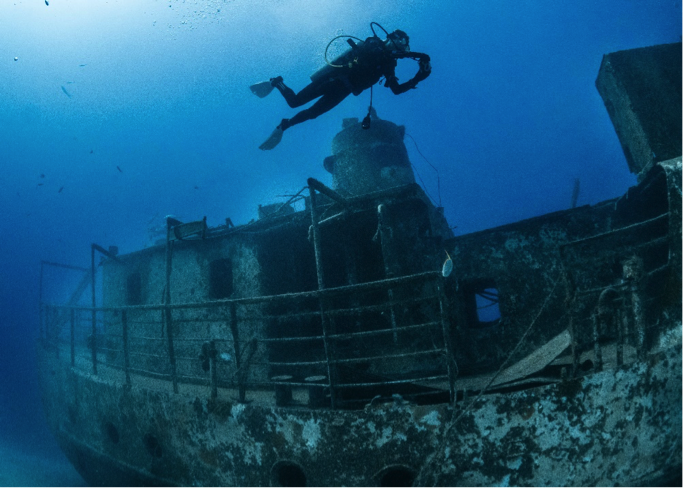What Are Sharks Aware Of?
More and more divers are meeting sharks for the first time, and wondering, “What do they see when they pass, gazing at us gazing at them?”
More and more divers are meeting sharks for the first time, and wondering, “What do they see when they pass, gazing at us gazing at them?”
Released earlier this month, the Global Reef Expedition: Cook Islands Final Report contains critical information on the health and resiliency of coral reef ecosystems in the Cook Islands.
To understand sea turtle behavior around ocean plastics, the research team compared how sea turtles in a lab setting reacted to smelling odors of turtle food, ocean-soaked plastic, clean plastic and water.
The turtles ignored the scents of clean plastic and water, but responded to the odors of food and ocean-soaked plastics by showing foraging behavior. This included poking their noses out of the water repeatedly as they tried to smell the food source, and increasing their activity as they searched.
Some land animals like rats and shrews use their whiskers to explore, forage and move around. For the first time, a team of researchers, led by Robyn Grant of Manchester Metropolitan University, were able to show that pinnipeds too use their whiskers in a similar fashion.
The study, published in the Journal of Comparative Physiology A sought to measure and compare whisker movements and control amongst three pinniped species—California sea lions, harbor seals and Pacific walruses.
Jakub Šimánek lives for diving and dives for a living. He inherited his passion for the underwater world from his father at a young age. Currently, a Factory Instructor Trainer for the Liberty closed circuit rebreather (CCR), Jakub has been a part of the development team at the dive equipment manufacturer Divesoft since 2012.
This scenario may one day become reality. And to be efficient, such robots would need to be maneuverable and stealthy, and be able to closely mimic the movements of the marine creatures.
Scientists like Keith W. Moored are working on the next generation of underwater robots by studying the movements of dolphins and whales. "We're studying how these animals are designed and what's beneficial about that design in terms of their swimming performance, or the fluid mechanics of how they swim."
The diving community understands that oxygen administration is a first aid treatment priority for divers with suspected decompression illness. The goal is to deliver oxygen at the highest possible concentration, being mindful of oxygen supply limits.
Widely known as a biodiversity hotspot for marine animals, Australia’s Bremer Canyon Marine Park has been found to also host rich, diverse ecosystems within the canyon’s cold waters.
This discovery was made during a scientific expedition after researchers used a deep-sea remotely operated vehicle (ROV) to collect samples of deep-sea corals, associated fauna, seawater and geological samples from the abyssal depths to the continental shelf.

Ian Rolle, Acting Chairman of the Grand Bahama Island Tourism Board (GBITB), reports that the island and its reefs fared well during Hurricane Dorian. “Three weeks after the hurricane, a crew from UNEXSO, our leading underwater experts, went on an exploratory dive of the reefs stretching along the south shore of the island, from the Grand Lucayan Water Way all the way to Silver Point Reef. At that time, it was discovered that all the reef structures were in standing positions and the wrecks were in the same location and status as before the storm,” noted Rolle.
Cape Town is a cosmopolitan, vibrant and modern city. Renowned for its beautiful landmarks of Table Mountain and the Cape Peninsula, Cape Town is a popular destination for divers who come to explore her colourful kelp forests, historic wrecks and glittering reefs.
It was due to be held this upcoming weekend - Saturday 14 and Sunday 15 March 2020.
The organiser regrets the inconvenience caused. A future date that will be announced as soon as possible.
It was delivered by a very tall, quiet Dutchman by the name of Pascal van Erp. Pascal explained how he had started to recover abandoned ghost fishing gear entangled on wrecks in 2009. He soon inspired others to join him. It was not long before organised teams of volunteer technical divers were recovering tons of ghost fishing gear off the Dutch coastline. In 2012, Van Erp formally founded the not-for-profit Ghost Fishing organisation.
Ghost fishing—a lost or abandoned net or other fishing equipment that is snagged on a reef or wreck—continues to trap marine wildlife.